-
Shop Talk - Beveling, the backbone of a strong weld.
November 02, 2020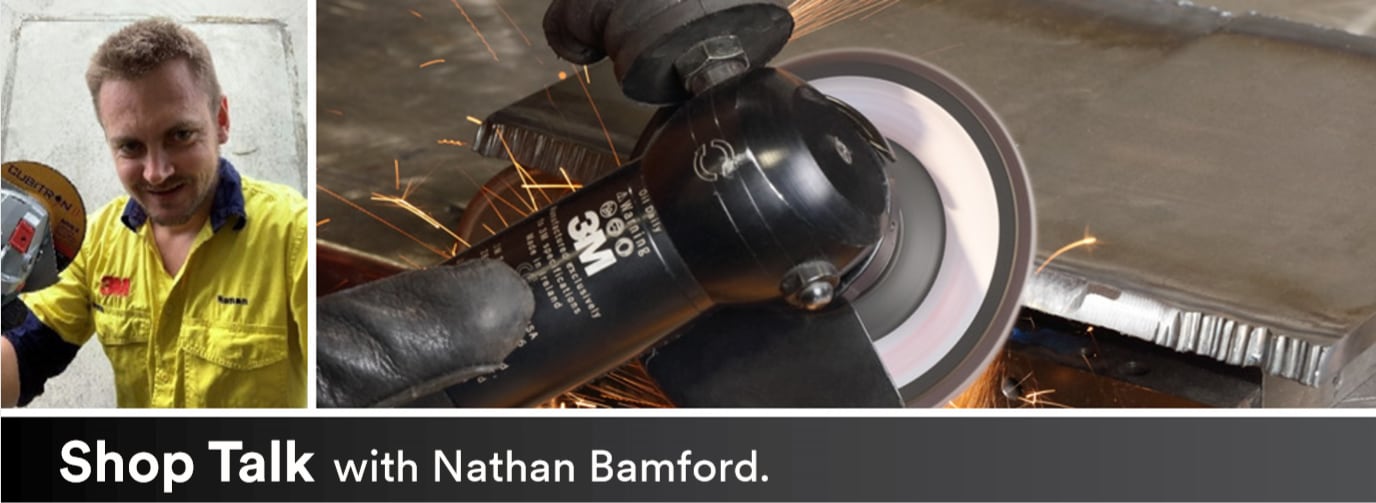
Beveling, the backbone of a strong weld.
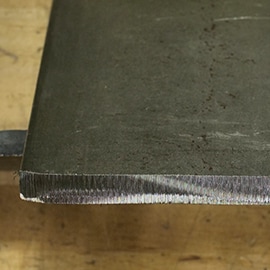
In metalworking, beveling is the process of preparing the ends of metal sheets or pipes for welding with an angled cut, it is the backbone of a strong weld. Beveling the edges of these substrates may seem like a small step in the metalworking process, but as fabricators know, doing it right makes welding easier. Making an angled bevel along two connecting edges increases the surface area, making more room for the weld allowing for a stronger tighter hold and cleaner finish, one that also ensures soft edges and transitions between surfaces.
From aesthetics to structural strength, beveling is a fundamental step in the welding process of many projects. In particular heavy-duty or industrial applications, where parts are typically subject to excessive forces and need to stand up to the test of time.
Let’s talk shop: Get your bevel on.
There’s more than one way to bevel a workpiece. Depending on personal preference, you can use a grinding wheel, a fibre disc or a flap disc. Here we’ll talk about the different beveling methods and perform a material removal test to discover what the best option is.
Tech tips, Nathan says:
- For the fibre discs, use a 3M High Performance back-up pad for best results. The ribbed, more rigid pad results in improved disc life and cut rate for lower cost and higher throughput.
- Pressure matters - conventional abrasives require heavy force to achieve fast cut rates, but 3M Precision Shaped Grain products can achieve faster cut rate with lower pressure, and last longer due to the shape of the ceramic grain.
- Use a quality industrial tool. Tools that have insufficient torque can reduce the performance of the abrasive, and wear the tool out faster.
Pro tips:
- Grinding wheels are known for their exceptional durability. While they may not cut the fastest, they will last through heavy grinding and beveling on many parts.
- While flap discs don’t cut the fastest, they are the most conformable and user-friendly. However, in high-pressure applications like beveling, flap discs tend to wear down quickly.
- Fibre discs are the fastest-cutting among the three abrasives, removing much more material than the grinding wheel and the flap disc.
Which disc cuts faster and better, for bevelling?
Curious to see which disc takes metal off faster and gives a better finish when beveling a workpiece? See for yourself, view our beveling test video below to discover how much material each product removes after 30 seconds of grinding on a 1018 carbon steel plate.
3M abrasives for beveling applications.
3M abrasives recommended for beveling applications provide an unbeatable combination of speed and long life for ease of use and consistent quality finishes. By using long-lasting, fast-cutting 3M abrasives to grind your bevel, you can minimise abrasive changeover to save money over time. Our top abrasive picks for beveling include our Cubitron™ II and Silver discs, outlined below.
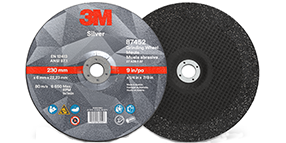
3M™ Silver Depressed Centre Grinding Wheel
- Powered by 3M Precision-Shaped Grain for ultra-fast cut and exceptional life
- Ideal for heavy grinding, beveling and weld removal
- Long lasting for optimal performance and value
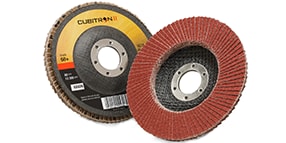
3M™ Cubitron™ II Flap Disc 967A
- Powered by 3M Precision-Shaped Grain for ultra-fast cut and exceptional life
- Ideal for grinding, weld removal, deburring and more
- Smooth-running wheels designed to cut with less pressure
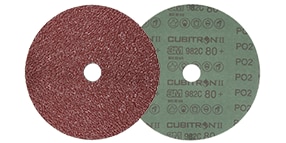
3M™ Cubitron™ II Fibre Disc 982C
- Powered by 3M Precision-Shaped Grain for ultra-fast cut and exceptional life
- Ideal for blending and finishing applications like weld removal, beveling, edge chamfering and more
- Optimised for use on stainless steel, high nickel alloys and superalloys
If you have any questions or for more information about Cubitron™ II and Silver grinding discs to meet the needs of your specific beveling application contact your 3M Abrasive System Specialist or explore our Industrial Abrasives & Finishing products.
About Nathan Bamford.
Nathan Bamford is 3M’s Application Engineer for the Abrasive Systems Division, Australia and New Zealand. He provides technical end user guidance and advice around the selection, use and maintenance of abrasive products and systems.
Nathan has a Bachelor of Mechanical Engineering and has been with 3M for ten years across a variety of businesses, from Automotive OEM, Industrial Adhesives and Tapes, Aerospace, and Abrasive Systems.
Nathan has a fascination with how things work and possesses extensive experience, knowledge and skills in optimising processes. He is passionate about how using quality abrasive products can improve both efficiencies and safety.
